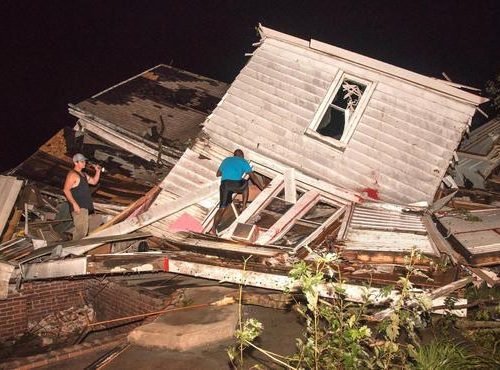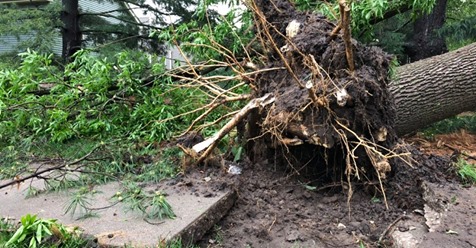A 1970 tropical cyclone that killed 300,000 people in East Pakistan — now Bangladesh — has officially been declared the world’s all-time deadliest weather event, the World Meteorological Organization announced Thursday.
The agency, part of the United Nations, also identified which tornado, lightning strike and hailstorm resulted in the highest death tolls.
“Knowing exactly how bad various types of weather have been in the past is an integral part of preparing for the future,” said geographer Randy Cerveny of Arizona State University, who led the committee that made the determinations. “As the old saying goes, ‘Those who forget the past are doomed to repeat it.’ ”
The horrific death toll in the 1970 tropical cyclone — the same type of storm as a hurricane — was mostly due to a large storm surge that overwhelmed the islands and tidal flats along the shores of the Bay of Bengal.
“In today’s world, it seems like the latest weather disaster is the worst,” Cerveny said. “I have often heard since 2005 that Hurricane Katrina was the deadliest tropical cyclone or hurricane to have ever occurred.”
But Katrina killed more than 2,000 people and “pales in comparison” to the 1970 cyclone in Bangladesh, he said.
Bangladesh (or East Pakistan) has endured four cyclones that killed 100,000 or more people, according to the nation’s meteorological department. By comparison, the USA’s deadliest hurricane slammed into Galveston, Texas, in 1900, killing 8,000 people.
The world’s deadliest tornado on record also struck Bangladesh, according to the WMO report. The twister, which carved a path a mile wide and 10 miles long, hit the nation’s Manikganj district on April 29, 1989, killing about 1,300 people. More than 12,000 people were injured and 80,000 left homeless.
Two separate events were listed in the lightning category: The deadliest “indirect” lightning strike occurred in Dronka, Egypt, on Nov. 2, 1994, when a bolt hit fuel storage tanks, igniting a massive fire that killed 469 people. The highest death toll from a single lightning strike came from a bolt that killed 21 people in a hut in Manica Tribal Trust Lands in Rhodesia (now Zimbabwe) on Dec. 23, 1975.
The deadliest hailstorm occurred April 30, 1888, near Moradabad, India, when as many as 246 people were killed by hailstones as large as goose eggs, oranges and cricket balls. An eyewitness said “men caught in the open and without shelter were simply pounded to death by the hail,” the WMO reported. “More than one marriage party were caught by the storm near the banks of the river, and were annihilated.”
Extreme weather’s ability to cause major destruction and loss of life fuels the organization’s efforts to learn lessons from previous disasters and improve early warning systems, said WMO Secretary-General Petteri Taalas. “The human aspect inherent in extreme events should never be lost,” he added.
“One aspect of the ongoing discussion and exploration of climate change is the increased mortality threat of climate change on the planet’s human population,” the report said. “As world population continues to grow along with change in global climate, a greater portion of humanity is threatened by a multitude of climate and weather phenomena.”
The report did not list the deadliest heat wave, cold snap, drought or flood, but the agency said it hopes to make those determinations in the future. The full report appeared in the journal Weather, Climate and Society, a publication of the American Meteorological Society.
by Doyle Rice
May 18, 2017




